
JAPANESE PRINTS
A MILLION QUESTIONS
TWO MILLION MYSTERIES
Ukiyo-e Prints浮世絵版画 |
| Port Townsend, Washington |
|
UTAGAWA TOYOKUNI III |
|
|
三代歌川豊国 |
|
|
さんだい.うたがわ.とよくに |
|
|
1786-1865 |
|
|
The large head in the toshidama cartouche represents the fox Tadanobu portrayed by Ichikawa Danjūrō VIII I am basing this identification on information provided by the Waseda University web site. It should be noted that Danjūrō VIII had been dead more than five or six years when this print was produced. However, such posthumous portraits are not unknown and until we find out otherwise we will keep this information as correct. |
|
|
狐忠信 - 市川団十郎 |
|
|
きつね.ただのぶ - いちかわ.だんじゅうろう |
|
|
Series: A Selection of the Twelve Months |
|
|
Mitate juni kagetsu no uchi |
|
|
見立て十二ヶ月ノ内 |
|
|
みたてじゅうにかげつのうち |
|
|
Publisher: Iseya Kanekichi |
|
|
伊勢屋兼吉 |
|
|
いせや.かねきち |
|
|
Carver: Yokogawa Takejirō |
|
|
よこがわ.たけじろう |
|
|
Date: 1859, 11th Month |
|
|
Ansei 6 |
|
|
安政6 |
|
|
Size: 14 1/2" x 9 7/8" |
|
|
Signed: Ichiyōsai Toyokuni hitsu |
|
|
署名: 一陽斎豊国筆 |
|
|
しょめい: いちようさいとよくにひつ |
|
|
There is another copy of this print in the collection of Waseda University. |
|
|
|
|
Condition: It would appear that this and the other prints in this series had been bound into an album. That would not only explain the relative freshness of the colors, but also the areas along the right side of the print where the binding holes have been restored. Other than that the print is in a good state with only very slight areas of distress and with slight soiling. |
|
|
$620.00 NO LONGER AVAILABLE! |
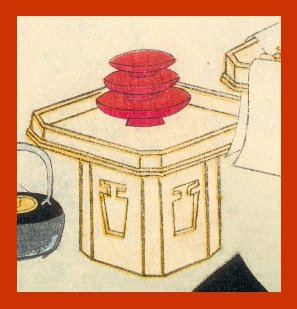
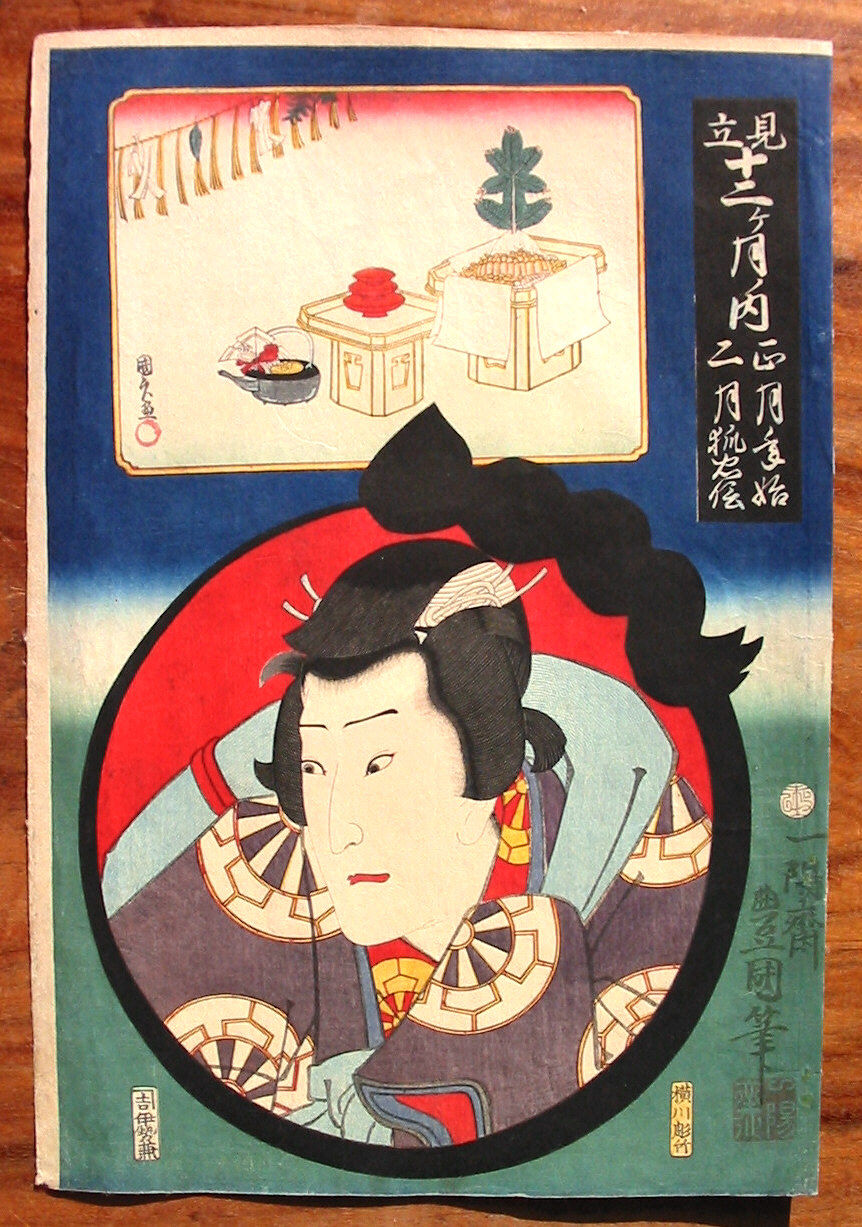
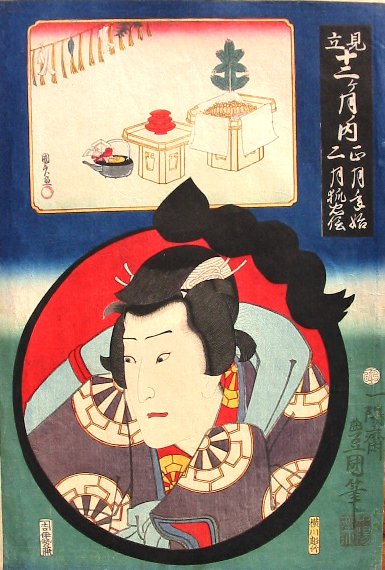 |
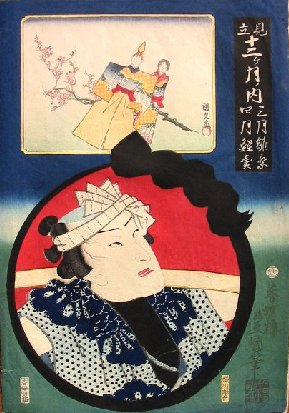 |
|
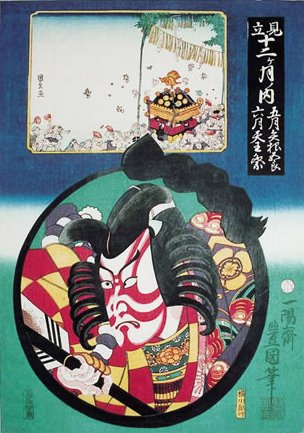 |
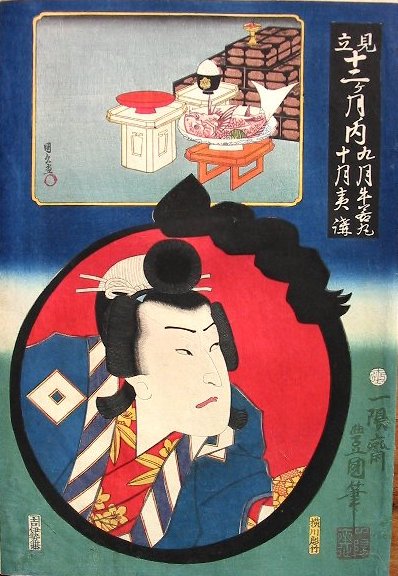 |
|
|
A SELECTION OF THE TWELVE MONTHS |
|||||
|
WE ARE OFFERING FIVE OF SIX OF THIS SERIES, BUT NOT THE FOURTH ONE FROM THE LEFT WHICH IS ALSO THE THIRD ONE FROM THE RIGHT. |
|||||
| Below is a metal kettle known as a choshi (銚子or ちょうし) used for warming and serving saké. | |||
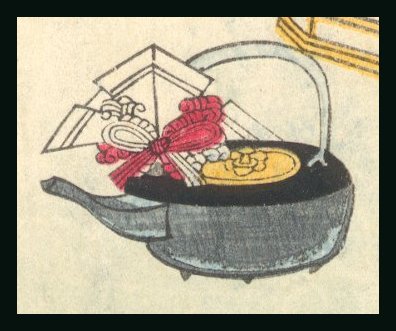 |
|||
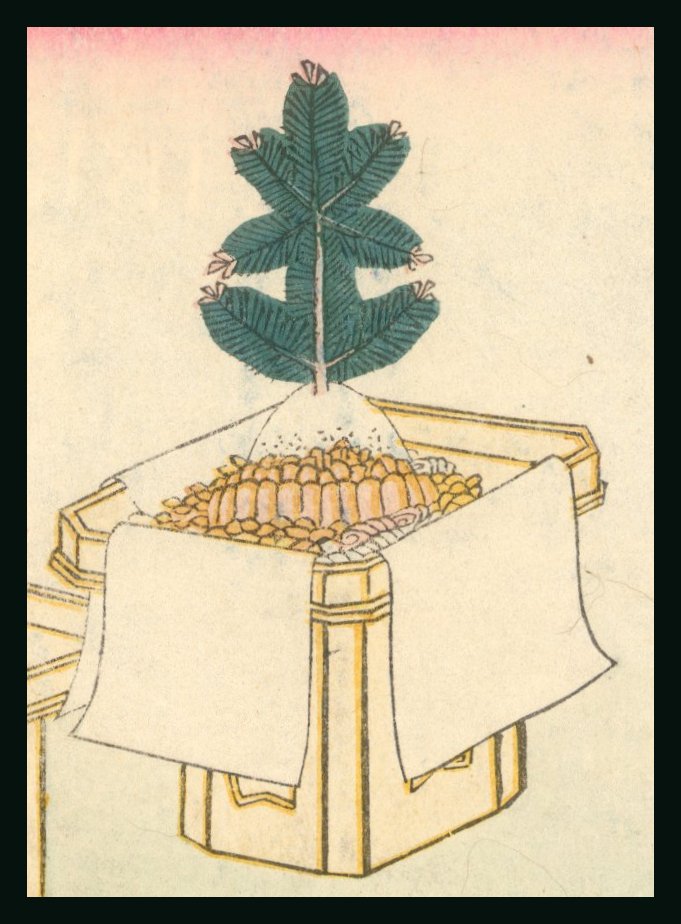 |
|||
| PAPER BUTTERFLIES | ||
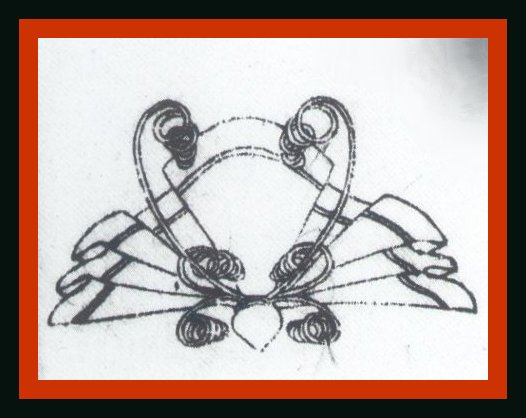 |
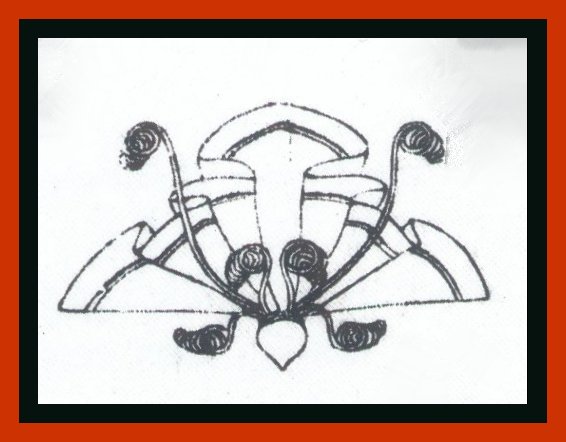 |
|
| FEMALE | MALE | |
|
Ivan Morris in his fascinating book The World of the Shining Prince: Court Life in Ancient Japan says of Shintoism that its "...central themes are joyful acceptance of the natural world and gratitude for its bounty, coupled with a horror of illness and death, which are regarded as the source of all pollution." (1) Morris states that at the time of Heian period Shintoism "...had not philosophical, speculative, or ethical elements; no elaborate ritual or priestly hierarchy; no saints, martyrs, or even a founder; no scripture or exegesis; no interest in education and art - in fact, no positive, constructive aspect whatsoever. So vague and amorphous was the native religion that not until Buddhism appeared in Japan did it even acquire a name - Shin-to ('the way of the gods'), as opposed to Butsu-dō ('the way of Buddha')." (2) |
||
 |
On the left is a very small detail from a pentaptych by Hokusai of a New Year's celebration at the Ōgi-ya house in the Yoshiwara. Included among the various images rich in symbolism such as the shi-shi, i.e., lions and the multiple Daruma dolls are the two saké containers atop a lacquer table greeting us at the top of the steps. Adorning each of the vessels are the origami butterflies, both male and female. |
|
|
Several years ago I wrote a Shinto scholar who teaches at a major American university. I asked this professor about the significance of the male and female paper butterflies attached to saké containers. The professor was stumped and perhaps a bit dismissive and said I should ask one of my competitors. Obviously I had not piqued this person's interest - at all. But finally, after years of waiting, and generally giving up I have run across a passage which may give us the answer.
"The formality of the marriage consists in drinking sake after a particular manner. The sake is poured out by two young girls, one of whom is called the male butterfly, and the other the female butterfly, - appellations derived from the susu, or sake-jugs, each of which is adorned with a paper-butterfly. As these insects always fly about in pairs, it is intended to intimate that so the husband and wife ought to be continually together. The male butterfly always pours out the sake to be drank [sic], but before doing so, turns, a little to the left, when the female butterfly pours from her jug a little sake into the jug of the other, who then proceeds to pour out for the ceremony."
Quoted from: Hildreth's "Japan as it was and Is": A Handbook of Old Japan, by Richard Hildreth, Ernest Wilson Clement, Published by K. Paul, Trench, Trubner, 1907, p. 179. Note: So far I have been unable to find the term susu which Hildreth says translates as sake-jug.
In another passage in Japanese Life, Love and Legend: A Visit to the Empire of the "Rising Sun Maurice Dubard (Published by Ward and Downey, 1886, p. 83) notes: "...two matrons take the phials of saké, each surmounted with a paper butterfly. These insects, naturally, are of each sex - the Japanese never overlook this circumstance, even in their paper puppets. The pair of butterflies are then placed on the floor one above the other." |
||
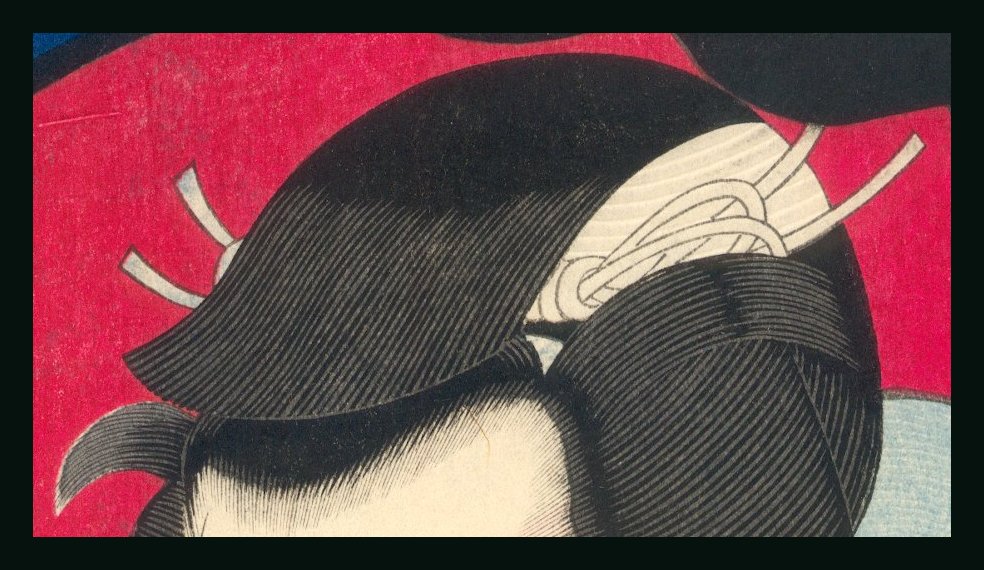 |
||
|
Above is a detail of the hairline of the dominate figure of this print. We have reproduced it here so you can get a better impression of the finer areas of woodblock carving. Notice the finer lines at the top edge of the forehead. What does not come through is the embossing found in the white cloth which is tied off on the top of the head. |
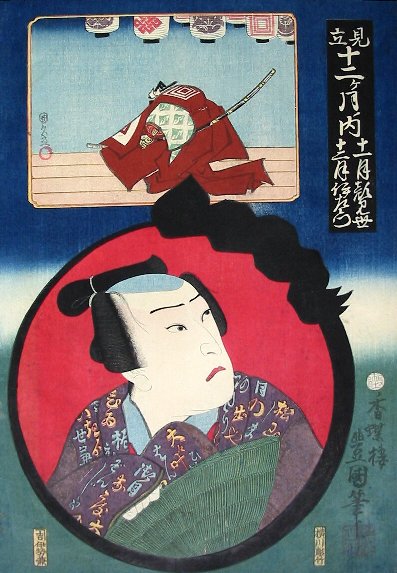
 HOME
HOME